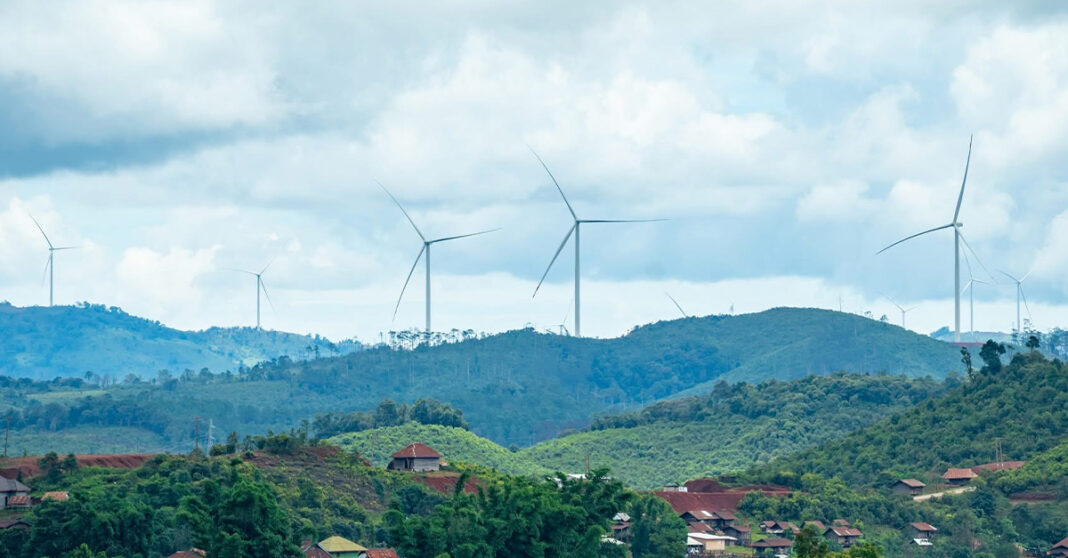Laos launched its first wind power project on 22 August.
The 600-megawatt Monsoon Wind Power Project is Southeast Asia’s largest onshore wind farm and Asia’s first cross-border renewable energy venture. It’s now begun supplying electricity to Vietnam Electricity (EVN).
Strategic Location and Scale
Spanning two southern provinces, Dak Cheung District in Sekong and Sanxay District in Attapeu, the 133 turbines are positioned along mountain ridgelides at elevations between 1,100 and 1,700 meters above sea level.
Each turbine generates 4.51 megawatts of electricity, enough to power roughly 3,000-4,000 households.
Electricity is being delivered through four 115-kilovolt substations, stepped up to 500 kV, and transmitted along a 27-kilometre high-voltage line to the Lao-Vietnam border, then onward to EVN’s Thanh My substation in Vietnam.
A Decade-Long Journey
Laos signed an agreement with the International Energy Agency in 2011 to study large-scale wind potential. After identifying Sekong and Attapeu as prime sites in 2015.
Later in September 2019, the Vietnamese government approved the wind project, saying it could safely connect to the power grid in Vietnam.
Construction began in April 2023. The first turbine was installed in October that year, and by May 2025, all 133 turbines were installed.
In July, the wind farm was operating at half capacity with 300 megawatts, according to Deputy Governor of Sekong Province, Khanti Seelavongsa.
International Partnership and Investment
The USD-950-million venture showcases unprecedented regional cooperation.
“The project not only delivers renewable energy at scale but also demonstrates how ASEAN countries can work together for a cleaner, more sustainable future,” said Nat Hutanuwatr, Managing Director of Monsoon Wind Power.
Over its 25-year lifespan, the facility will prevent 32.5 million tonnes of Carbon dioxide emissions, or approximately 1.3 million tonnes of Carbon dioxide annually, equivalent to removing seven million cars annually or planting 59 million trees for a quarter-century.



